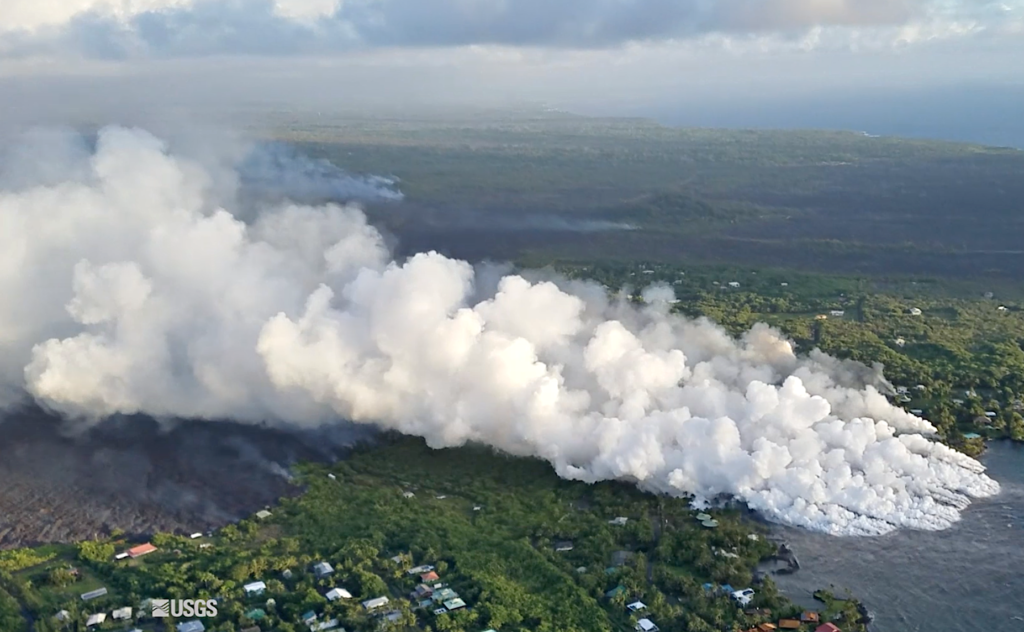Dangerous Laze Forms at Lava Ocean Entries
Lava has entered the ocean at numerous points along the Lower East Rift Zone of Hawai‘i Island (from Fissues 8 and 18), forming localized, dangerous airborne glass particles called “laze” (lava plus haze).
Laze is formed when hot lava hits the ocean sending hydrochloric acid and steam with fine glass particles into the air.
Residents and visitors should avoid this plume at the entry point and downwind, as even the wispy edges can cause lung, skin and eye irritation, and breathing difficulties.
Be aware of the laze hazard and stay away from any ocean plume.
Downslope air flow from nighttime through early morning typically blows the laze plume offshore and out to sea.
Between mid-morning and late afternoon; however, trade wind conditions blow the plume along the coast and inland, resulting in locally poor air quality.
Be aware that the wind and can change direction without warning.
LAZE FORMATION
When molten lava flows into the ocean, it reacts vigorously with sea water to create a gas plume that results in hazy and noxious conditions downwind of an ocean entry. Laze forms through a series of chemical reactions as hot lava boils seawater to its evaporation point.
LAZE DANGERS
The plume is an irritating mixture of hydrochloric acid gas (HCl), steam, and tiny volcanic glass
particles.
This hot, corrosive gas mixture caused two deaths immediately adjacent to the coastal entry point in 2000, when seawater washed across recent and active lava flows.
Acid rain from the plume has a pH between 1.5 and 3.5, and has the corrosive properties of dilute battery acid.
















